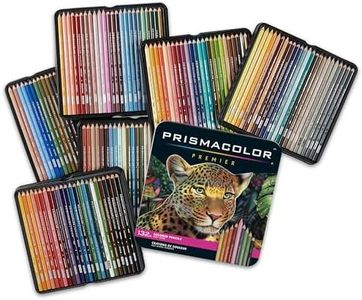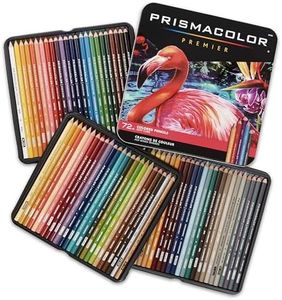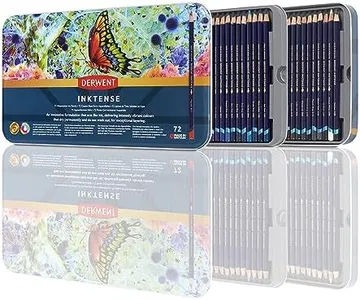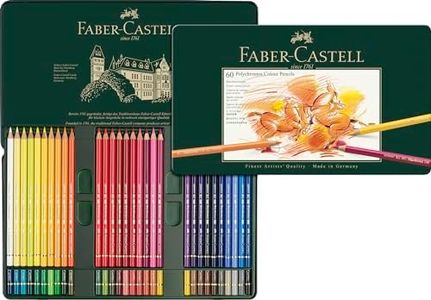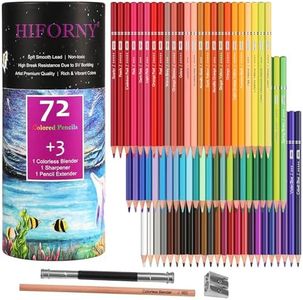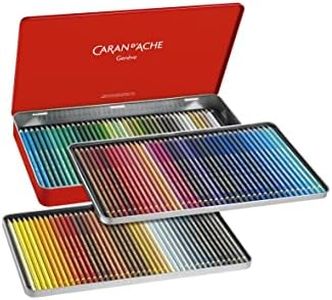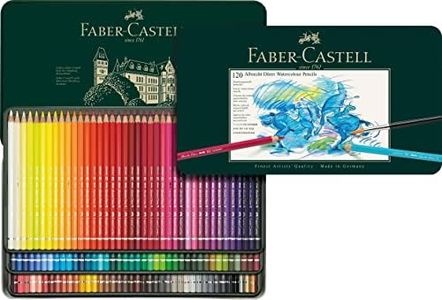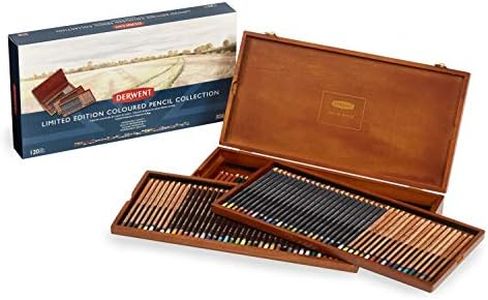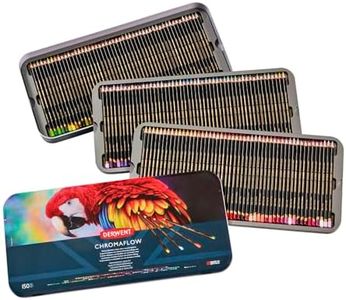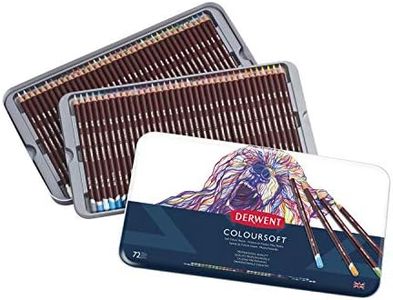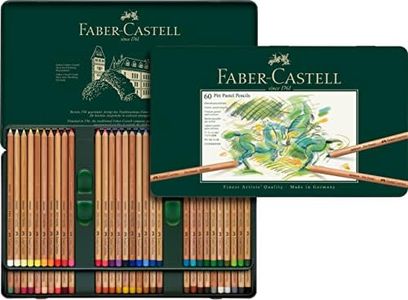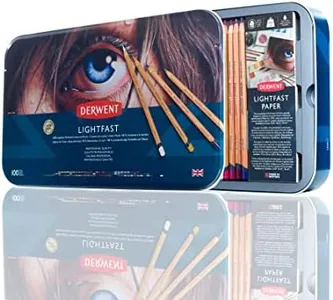We Use CookiesWe use cookies to enhance the security, performance,
functionality and for analytical and promotional activities. By continuing to browse this site you
are agreeing to our privacy policy
10 Best Colored Pencils For Artists
From leading brands and best sellers available on the web.Buying Guide for the Best Colored Pencils For Artists
Choosing the right colored pencils for art can make a big difference in your creative process and the results you achieve. It’s important to think about what you plan to create, how experienced you are, and the kind of effects you want—like vibrant colors, smooth blending, or fine details. The key to finding the best colored pencils is understanding the main features that set them apart, so you can select what matches your artistic needs and style.Core TypeThe core of colored pencils can be wax-based, oil-based, or water-soluble. Wax-based cores are most common and blend easily, perfect for layering and general use. Oil-based cores are firmer, less prone to breaking, and hold points longer, which is great for detailed work. Water-soluble (or watercolor) pencils can be used dry or with water for painting effects. To choose, think about your style—if you enjoy blending and soft effects, a softer wax or watercolor core might suit you. For fine details or precision, consider oil-based pencils.
Color Vibrancy and SelectionThis refers to how vivid the colors look and how wide the color range is in a set. Some pencils are highly pigmented for bold, bright color, while others are softer or muted. Large sets offer hundreds of shades for subtle transitions, while basic sets cover the essentials. If you like complex, detailed works or want maximum flexibility, a broader range is helpful. For sketching, coloring books, or simple artwork, a basic set of core colors might be all you need.
LightfastnessLightfastness is a measure of how well colors resist fading over time when exposed to light. If you display your art or hope it lasts for many years, choose pencils with high lightfastness ratings, usually marked on packaging or as a star or scale system. For practice or work that won’t be displayed, this spec may not matter as much.
Blending and Layering AbilitySome colored pencils are designed to blend and layer easily, allowing you to create smooth transitions and richer colors by layering shades on top of each other. Softer pencils usually blend better, while harder pencils allow for more distinct, crisp marks. If you enjoy creating gradients, shading, or painterly effects, look for pencils praised for their blendability. For more controlled, graphic styles, a harder pencil might fit your needs.
Point Strength and DurabilityThis is about how well the pencil point holds up during use—whether it snaps easily or can be sharpened to a fine tip repeatedly. Softer cores tend to break more but are creamier, whereas firmer pencils last longer and suit those who press harder or need sharp points for details. If you’re heavy-handed or focus on intricate drawings, prioritize pencils with good point durability.
Casing MaterialThe casing, typically wood, affects how smoothly the pencil sharpens and how comfortable it feels in hand. Higher-quality wood, like cedar, tends to sharpen more evenly and protect the core better. If you value comfort and consistent sharpening, look for pencils made from quality wood, especially if you use them for long periods.
